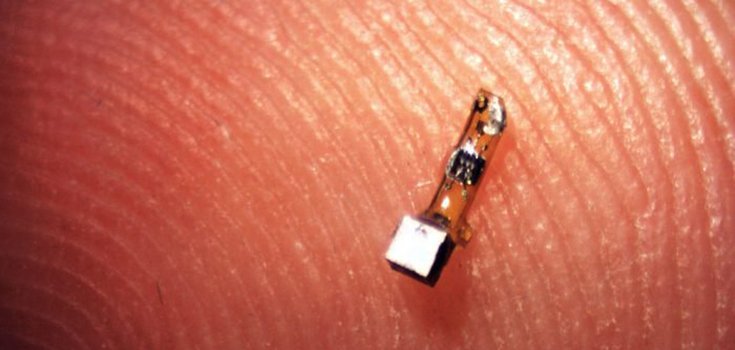A Tiny Implantable Device Could Help Paraplegics Move Again

By modern standards, fitness trackers seem like amazing gadgets. They keep tabs on our heart rate, count our steps, and monitor our sleep. But there will come a day when a tiny device barely visible to the eye will connect the human body to computers without wires, batteries, or even the need to wear them. Researchers are in the midst of developing “neural dust,” implants that are about the size of a grain of sand. It can monitor any nerve, organ, or muscle in real time.
These minuscule gadgets could also eventually be made even smaller, allowing them to be implanted into the brain to control robotic devices like prosthetic limbs.
Professor Michel Maharbiz, of University of California, Berkeley, who is one of the creators of neural dust, said:
“I think the long-term prospects for neural dust are not only within nerves and the brain, but much broader. Having access to in-body telemetry has never been possible because there has been no way to put something super-tiny super-deep [in the body].
But now I can take a speck of nothing and park it next to a nerve or organ, your [gastrointestinal] tract or a muscle, and read out the data.” [1]
How it Works

The infinitesimal sensors are powered via ultrasound vibrations, which are capable of penetrating virtually any part of the body.
A special crystal inside the device converts ultrasound into electricity, which powers a tiny transistor.
Should a voltage spike in a nerve or muscle fiber occur, the vibration of the crystal is altered, changing the way the sound echoes back to an ultrasound receiver.
Thus far, researchers have conducted tests of neural dust on muscles and the peripheral nervous systems of rats.
Maharbiz explained a bit more about the science-fiction sounding technology:
“I think the long-term prospects for neural dust are not only within nerves and the brain, but much broader.
Having access to in-body telemetry has never been possible because there has been no way to put something super-tiny super-deep. But now I can take a speck of nothing and park it next to a nerve or organ, your [gastrointestinal] tract or a muscle, and read out the data.”
The Potential Benefits of Neural Dust

Right now, the central nervous systems and brains of humans can be controlled to a degree using traditional brain implants, but these require wires that go through a hole in the skull, leaving patients vulnerable to infections or movement of the sensor within the brain. Neural dust would erase the need for permanent holes.
Last fall, scientists at Wake Forest Baptist Medical Center announced they had developed a brain prosthesis designed to help dementia patients and brain-damaged soldiers recapture their memories. It’s groundbreaking technology, indeed, but the prosthesis requires wires and electrodes.
The brain implants available right now must also be replaced after a year or 2. Scientists are trying to develop neural dust so that they can last in the body for more than 10 years. [2]
One of the reasons the UC Berkeley researchers focused on creating a wireless implant was to avoid irritating the body, as conventional electronic implants that connect to nerves greatly depend on wires that can inflame tissues over time.
Jacob Robinson, of Rice University, who did not take part in the research, said in a news release:
“The approach they’re taking is ingenious. They’ve addressed one of the most important challenges out there when it comes to neural interfaces.” [3]
The Obstacles

Professor Jose Carmena, a neuroscientist at Berkeley, said the devices would have to be 50 microns in size – 1 millionth of a meter, and invisible to the human eye – to implant them into the brain and central nervous system, and the technology to do that simply doesn’t exist yet.
But once is does, Carmena said, “neural dust will just replace wire electrodes. This time, once you close up the brain, you’re done.”
He added:
“The beauty is that now, the sensors are small enough to have a good application in the peripheral nervous system, for bladder control or appetite suppression, for example.”
But the future is even brighter for people rendered motionless, either by disease or an accident. Neuroscience grad student Ryan Neely said in a news release:
“If a paraplegic wants to control a computer or a robotic arm, you would just implant this electrode in the brain and it would last essentially a lifetime.” [2]
The scientists detailed their work in the journal Neuron.
What do you think about this ‘advancement?’
Sources:
[1] The Independent
[2] Cnet
[3] Popular Science
